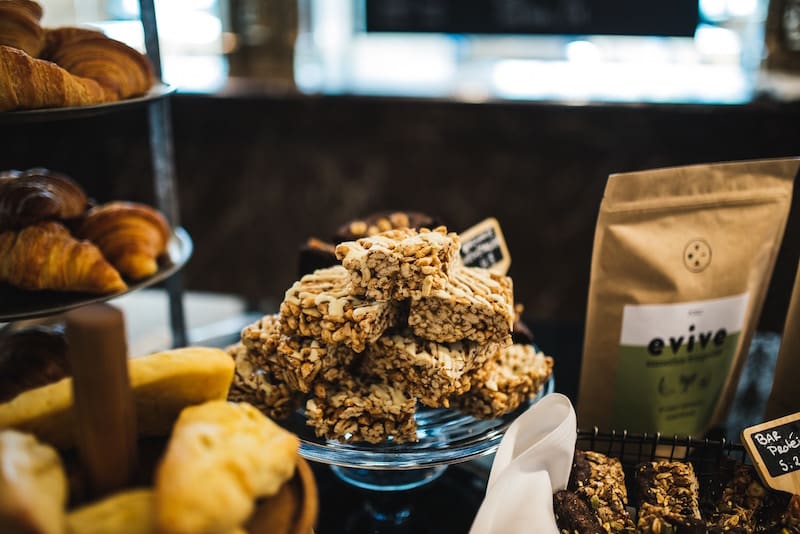Keeping it Real: Raina’s Gluten-Free Diet Trial
This year the theme at Revive is “Keeping it Real.” The goal with this theme is to highlight some of the areas where our dietitians struggle and the strategies they use in everyday life.
There are a variety of different diets out there. From the vegetarian diet to the FODMAP diet, some are based on personal choice while others are intended to address health concerns. Over the next year, Raina, one of Revive’s Registered Dietitians, will follow a variety of diets for at least one week. Living in the shoes of many of her clients, Raina will share the benefits and challenges of each diet and her experience adjusting to new ways of eating.
Living Gluten-Free
This past week for my dietary restriction I entered the massive world of gluten-free. My eyes were opened to the many products available and marketed as “gluten-free”, “gluten-friendly”, “no gluten” etc. For anyone who isn’t aware, gluten is simply a type of protein found in certain grains, including wheat, rye, barley, and triticale. In and of itself, it is not a “bad” food—it’s actually very beneficial! It provides a higher protein content as well as creates that light, fluffy, binding texture that makes bread products so enjoyable.
For some people however, gluten is not an option. When individuals lack the ability to break down gluten in their gut, it creates severe gut issues and can even damage the lining of the stomach and intestines. So, whether you need to eat gluten-free because of a diagnosis of Celiac disease or if you just feel better avoiding major sources of gluten, this blog will help to provide some insight.
For the last little while, I have tried to imagine what it would be like to be just diagnosed with Celiac disease. I had to take a very close look at my fridge and pantry to determine what is still safe for me and what was no longer safe. There were over 25 food items from my fridge and pantry that I would have to throw away. And those were the easy ones to identify! The minuscule ingredients in some of my products involved a lot more scrutiny. I would also need to get a new toaster, purge my old cutting boards, and completely change my sanitizing techniques (no longer can I quickly rinse off the cutting board and knife after cutting bread or buns).
The initial cost of replacing all my food left me feeling discouraged, and then I felt overwhelmed thinking about how to feel completely confident in my grocery choices moving forward. To be perfectly honest, in this first week I did not even venture into a restaurant. If my experience is even close to someone who is newly diagnosed with Celiac disease, I can sympathize a little more now.
If you are transitioning to a gluten-free diet, my biggest recommendation is to do it in stages:
Week 1
Focus on making your home environment safe. Purge your fridge and pantry, removing anything that is contaminated (think double dipping into the jam jar when making toast). Stock up on food items that are naturally gluten-free. All fruit, vegetables, unprocessed proteins, and some grains and starches do not contain gluten, so we can easily fit those into our diet in a balanced way.
Week 2
Start reading nutrition labels. There are a lot of great resources online to tell you which ingredients to avoid for potential sources of gluten. Make a list of your go-to condiments that are safe for you and where to buy them. Build this part slowly as you go!
Week 3
Navigate the gluten-free processed foods. Not all of these are “healthy” just because they are gluten-free. Experiment with bean-based pastas, different flours for baking, and items such as crackers and breads. You will find that for the majority of gluten-free bread products, toasted is WAY better.
Week 4
Head out to your favourite restaurants. This may take a little research ahead of time. Explore your local Celiac or gluten-free group online to see if others have made recommendations. Know the right questions to ask (is the food certified gluten-free, can they hold off on the spice mixes, what sauces are used, are separate preparation spaces and appliances used etc.).
After a Month
Start experimenting with your own baking and sauce-making. This can be an intimidating step as the chemistry of baking and cooking changes completely with gluten-free ingredients. Build up your repertoire slowly and don’t be discouraged if your recipe does not turn out as you hoped!
If you are following a gluten-free diet, be aware of the nutrients you are missing out on! Whole grains such as breads and pastas often contribute a lot of fibre to our diet. Processed gluten-free grains will not contain the same fibre content, and are often higher in fat and sugar to make them more palatable.
Get enough fibre – focus on fibre rich gluten-free grains (quinoa, millet, amaranth, buckwheat) and keep the skins on your starchy vegetables (beets, squashes, potatoes).
Folate – Health Canada recommended folate be supplemented into processed grains and flours to help prevent the incident of neural tube defects in women. Ensure adequate intake of folate through leafy greens, beans and legumes, and a supplement if needed.
B vitamins – whole grains typically are the source of the majority of our B vitamins. Ensure you are eating a variety of whole foods, and do not just rely on the processed grains.
Check out these resources for more help!
Canadian Celiac Association: More information on medical claim reimbursements for Celiac/GF foods.
“Individuals diagnosed with Celiac Disease are eligible to claim the incremental cost of gluten free food as a medical expense.”
Celiac Association of Canada Edmonton Chapter: Blogs, recipes, products, shopping tips, local restaurants written by consumers.
Gluten-Free Edmonton: A list of local restaurants/gluten-free shopping.
Gluten-free Certification Organization: Products officially certified to be gluten-free. This organization declares < 10 ppm of gluten found in a food must be met to be gluten-free.

